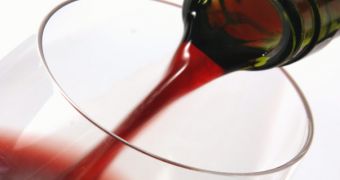Most likely, many of you don't have access to or cannot afford a glass of exquisite wine and have to abide by a bottle of average plonk that a true connoisseur would call sewage. Perfect wines take way too long to be obtained; the required conditions are not easy to reproduce, while the know-how of the process is restricted to the chosen few. And generally, industrial scale wine-producing companies do not have the patience to do it, as they prefer a smaller but faster and safer profit.
But what if there was a shortcut to this that would enable you to turn the undrinkable into potable and the reasonable to vintage-like? As the demand in the Chinese market is constantly increasing, Xin An Zeng, a chemist at the South China University of Technology, in Guangzhou, thought to apply a technique used in food industry to bottles of Cabernet Sauvignon about a decade ago. Amazingly, it turned out that subjecting the wine to a high voltage makes it far better.
"Using an electric field to accelerate ageing is a feasible way to shorten maturation times and improve the quality of young wine," explains Herve Alexandre, professor of oenology at the University of Burgundy, in France, cited by New Scientist. Young wine can derange your stomach and cause devastating hangovers and an arid thirst, besides the fact that it tastes... well, not as it should. The fastest you can drink a wine is about half a year, while a good one can sometimes take 20 years to make.
Aging de-acidifies it and, in the presence of tiny amounts of oxygen (allowed by corks or oaken barrels), it ensures the reactions that cause it to become clearer, softer and enhance its aroma. The concentration of long-chain alcohols that cause unpleasant odors and an acid taste is reduced, while that of flavor-boosting esters and the bouquet of fruitiness is increased. But Zeng doesn't know yet how exactly electricity manages to achieve all that so fast (his studies forced current through different wine samples during one, three and eight minutes respectively).
"Not only can it shorten a wine's normal storage time, it can also improve some lower-quality wine," he shared. "It works just as well with other grape varieties such as merlot and shiraz." Five Chinese wine manufacturers started tests based on this technique. Zeng himself stated having "thought of designing a set of equipment for use at home... but not yet."

 14 DAY TRIAL //
14 DAY TRIAL //